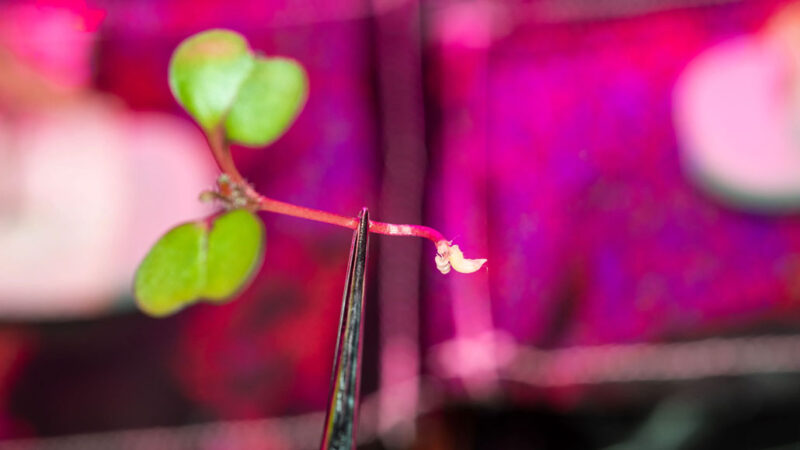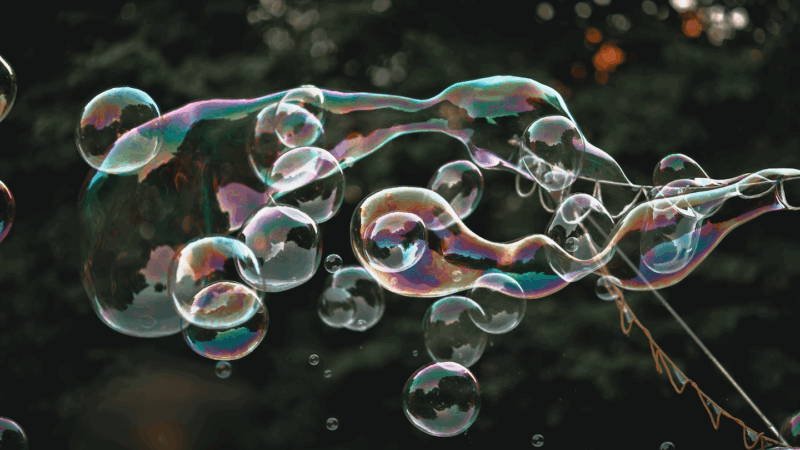Paddleboats (Figure 1) were very common in the 1800s. They were usually powered by steam engines. While most modern boats use propellers instead of paddles, there are still smaller human-powered paddleboats with pedals like a bicycle (Figure 2) and even smaller rubber band–powered paddleboats that can be used as bathtub or pool toys (Figure 3).
The paddleboat in Figure 3 is powered by a rubber band. When you wind the rubber band up, it stores potential energy. When you release the rubber band, the paddle spins, pushing on the water, or exerting a force. Since the paddle pushes on the water, the water also pushes back on the paddle, pushing the boat forward (this is called Newton’s third law of motion, or “for every action there is an equal and opposite reaction”). The potential energy stored in the rubber band is converted to kinetic energy, the energy of motion, as the boat moves forward.
Other forces also act on the paddleboat as it moves forward. The paddleboat’s own weight pulls it down, but the buoyant force from the water makes it float. Friction from the water sliding past the boat, or drag, slows the boat down.
To make the boat go as fast as possible, you want to have the biggest push from the paddle and the smallest amount of drag. There are different ways you can change these forces. For example, you can change the shape of the paddle or the hull (body) of the boat. You can also try making your boat from different materials. In this project you will use the engineering design process to design, test and improve your boat. How fast will your boat go?
Figure 2. A pedal-powered paddleboat (say that five times fast!). The paddles are under the boat, so you cannot see them in this picture.
Terms and concepts
Paddleboat
Potential energy
Force
Newton’s third law of motion
Kinetic energy
Weight
Buoyant force
Drag
Hull
Questions
What materials do you think you can use to build a paddleboat?
What forces act on a moving paddleboat?
How do you think you could change the shape of a paddleboat to make it go faster?
Resources
Science Buddies Staff (n.d.). The Engineering Design Process. Science Buddies. Retrieved August 27, 2021.
Materials and equipment
Rubber band
Materials for the boat, such as:
Cardboard (requires duct tape for waterproofing)
Balsa wood
Popsicle sticks (requires hot glue gun for assembly)
Optional: Small pieces of foam to make the boat float better
Pencil
Ruler
Hobby knife or scissors
Bathtub or kiddie pool
Stopwatch or tape measure
Figure 3. A small toy paddleboat made from a rubber band and balsa wood is shown at the beginning of this video.
Experimental procedure
Fill your bathtub or kiddie pool with water so you are ready to test your boat.
Depending on the materials you have available, there are three different basic boat designs you could build. The three videos show boats made from balsa wood, cardboard and popsicle sticks. Try building one of these boats to start, but you can also combine materials (for example, use a mix of balsa wood and popsicle sticks).
Test the boat in water. Write down your observations about the boat and any problems you notice. For example:
How far does it go before it stops? You can measure this with a tape measure if your boat does not make it all the way across the pool/tub.
If it does go all the way across the pool/tub, how long does it take? You can measure this with a stopwatch.
Does the boat go straight?
Does the boat seem to struggle through the water or does it sink?
Based on your observations, think about how you could improve your boat. For example:
The boats in the video above have completely flat hulls. Can you make a hull that is more three-dimensional and shaped like a real boat?
Can you add a rudder that helps the boat go straight?
Can you build a paddle with more than two blades, like a real paddleboat?
What happens if you wind the rubber band more tightly, or use a different rubber band?
Try making improvements to your boat and test it again. Keep iterating and testing your design until you are happy with your boat’s performance.
Variations
The boats in this project are not waterproof for a very long period of time. If you let them soak in the water for too long, they might fall apart or start to bend. Can you design a boat that is completely waterproof?
Can you make a 3-D printed boat instead of building one with craft supplies?
For examples of more complex designs built with popsicle sticks, see these two videos:
This activity is brought to you in partnership with Science Buddies. Find the original activity on the Science Buddies website.

















